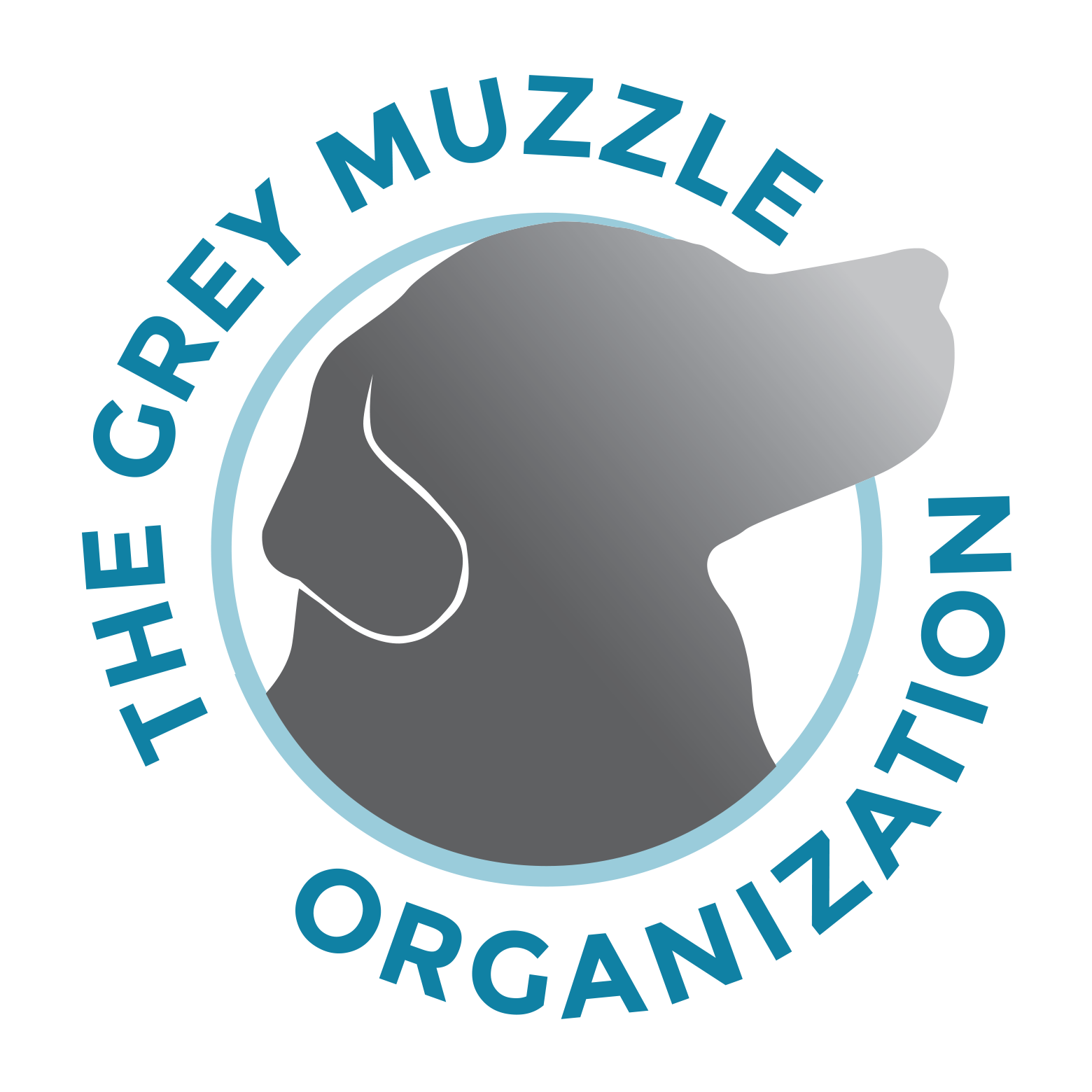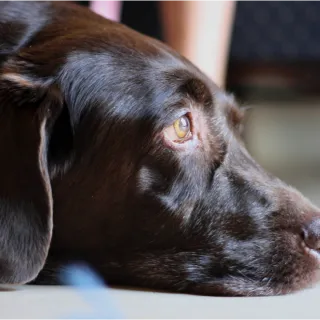Car Safety and Your Senior Dog
It is the height of summer travel season, and pets are part of the family, so many may be hitting the road, but thousands of animals are injured or die each in car accidents. The cost of a properly fitting seat belt or harness is nothing compared to the cost of your pet not wearing one. A 50-lbs. dog, traveling 30 mph, will feel like nine 170-lbs. men pushed him against a brick wall if he is thrown during a motor vehicle accident (that’s “ruff”ly 1,500 lbs. of force)! Thinking back on our high school physics class -- a body in motion stays in motion until acted upon by an outside force. This means that, even once brakes are applied, an unrestrained dog will continue moving forward at 30, 40, 50 mph or more until something stops him. That something will likely be the seat back, dashboard or windshield causing devastating injuries. If not restrained, your dog could escape through windows broken by the impact or opened car doors, only to end up being struck by on-coming vehicles.
Cause of Accidents
Pets are often the cause of accidents. According to the American Automobile Association (AAA), animals moving around in cars are the third worst distraction to a driver ranking only behind children and cell phones.
Ways to Keep Your Pets Safe
No excuses! Buckle Fido into a pet-specific seatbelt, even if it’s only a ride around the block. Dog restraints easily attach to your vehicle’s seat belt buckle or strap, or may hook to a guy wire or bracket. Measure harnesses accurately and read about body-shape specifics so that you will get the safest, most properly fitting device. Some allow pets to only sit up while others give enough freedom for your senior dog to turn around and lie down. Take into consideration your senior dog’s frailties; arthritis, sore hips and joints may be a concern as to where the harness hugs his body. Wire cages or plastic crates are also good choices as they shield dogs from falling objects, but animals can get tossed around inside. Be sure the crate too is secured so that it along with your dog does not become a projectile during an impact or sudden stop. Harness or crate, visit The Center for Pet Safety to find a fully tested and approved device, as well as to watch videos that show testing and what can happen if you don’t properly restrain your pooch.
Never Let Your Dog Ride with His Head Out the Window
Gravel, tree branches, dust, pollen and even the breeze may result in infection, injury or trauma to his eyes. If his head is out the window and his paw steps on a power button, the window could close on his neck.
Do NOT Let Your Dog Ride “Shotgun”
If the airbag is deployed it could crush a small pet or break his neck. Even inside a fiberglass crate, it is not safe for a pet to ride in the front seat, as some crates have disintegrated on contact with an airbag. In larger dogs, bag deployment in the face could sever the lingual artery in the tongues from the force of teeth slamming together. This would place your dog in an emergency situation incurring heavy blood loss. If the airbag has been deployed it is unlikely you or your car will be in any condition to transport an injured pet.
NEVER Let Your Dog Ride Unrestrained in the Bed of a Pick-up Truck
Many cities now prohibit this practice altogether while others are considering laws to make pet restraint mandatory in all vehicles. A senior dog, in particular, should not be subjected to hard unsteady surfaces where bone and joint injuries could occur. An older dog’s skin too, is not as tough as it once was, so traveling in a truck bed could cause bruising and wounds. Additionally, cases have been reported of dogs getting ‘scalped’ when falling through the back window of a pick-up truck.
If truck bed transport is absolutely necessary, be double doggone sure that:
1) The space is enclosed or has side and tail racks to a height of no less than 46 inches extending vertically from the bed.
2) The dog is cross-tethered to the vehicle using a harness that encircles his shoulders and rib cage (Never attach tethering or leashes to a neck collar in a moving vehicle).
3) Your dog is protected by a secured container or cage that cannot fall or slide about and provides some cushioning.
Several campaigns have been launched to help you become proactive for the safety of your pet, and new products become available all the time, so become a savvy pet parent keeping your eyes open for new ways to keep your best friend safe.
When going out of town, have your veterinarian examine your dog a month prior, and then a few days before, departure. Make sure vaccinations are current, and that you bring along proof of injections as well as a Health Certificate.
Next, get your dog acclimated to the car by taking short trips close to home. Should your traveling companion need a bit of calming, dog-friendly CDs are available that can relax the whole family while aromatherapy may spritz anxiety away. Aromatherapy sprays take effect more quickly than ingested herbs and can be applied within minutes of departure. The mist can be massaged onto the outer ears or abdomen of the pet or sprayed on his favorite blanket. Vicki Rae Thorne has been blending essential oils for 20 years and suggests, “Lavender, tangerine and rose geranium can have a calming effect while bergamot has been used for anxiety and ginger for stomach upset.” Bringing along favorite toys, as well as providing frequent walks, can make the trip more pleasant for all.
Reducing Motion Sickness
If your senior pooch gets queasy, feed your older fella or lady a couple ginger snap cookies 20-minutes before any car ride to settle queasy canine tummy. If using pure ginger capsules, give 100 mg per 25 lbs. of body weight 30 minutes before departure and repeat every 8 hours. Also,
- Make sure travel takes place on an empty stomach. Give your pet 4-6 hours after mealtime before hitting the road.
- Confining your pet not only makes safety sense, but it also restricts his movement, lessening the likelihood of nausea. If your pet is riding in a crate or carrier, facing the crate forward helps prevent motion sickness. If you must turn it in another direction for safety sake, cover it to prevent your pet looking out in a non-forward moving direction however, make sure you dog has plenty of good ventilation.
- If you have more than one vehicle, let Rover try them all out. Some cars vibrate more or are more conducive to motion sickness than others.
- Finally, keep the car cool inside and prevent harsh sunlight from directly shining on your pooch.
If motion sickness seems to be an ongoing problem for your pet, speak to your veterinarian about Cerenia (maropitant citrate) or other prescription medications that won’t make your senior dog drowsy, but will allow him to spend his time on four wheels more comfortably with you.
Pit Stops
When making stops along the way, NEVER EVER leave your dog alone in the car for even a few minutes. Despite windows rolled down, cars get very hot, very fast, and your best friend could suffer brain injury, kidney or liver failure, or death! When it’s a comfortable 75°F outside, internal car temperatures in a parked car can rise to 120°F, even with windows slightly open. Always keep someone in the car with your dog or don’t make the stop. It’s PAWSitively NOT worth the risk.
Traveling along the open highway is a bow wow wondeRUFFul thing with your best furry pal by your side. Plan ahead, research restraints and know how to fit them properly. Don’t skimp on safety measures. When you have a dog, you have the privilege of caring for a four-legged toddler for life who must be protected by you.
Known as The Pet Safety Crusader™, Denise has personally taught more than 15,000 humans animal life-saving skills and has appeared on Animal Planet’s Groomer Has It and Pit Boss, A&E’s Kirstie Alley’s Big Life, CBS-TV’s The Doctors, CNN Headline News, PBS-TV’s Lassie’s Pet Vet and KTLA Los Angeles as well as on radio and in magazines.
She is currently the President of Grey Muzzle's Board of Directors. You can read more about her here.



